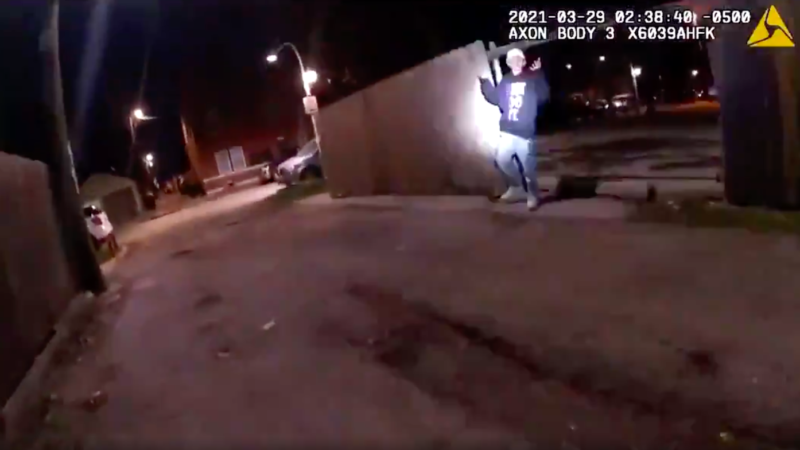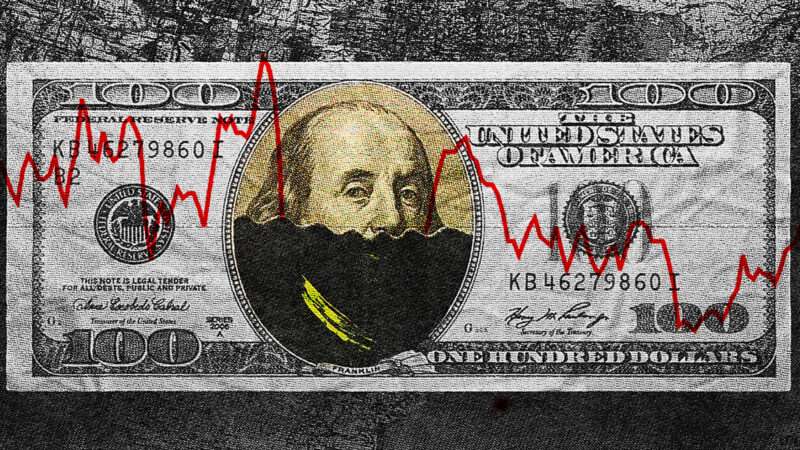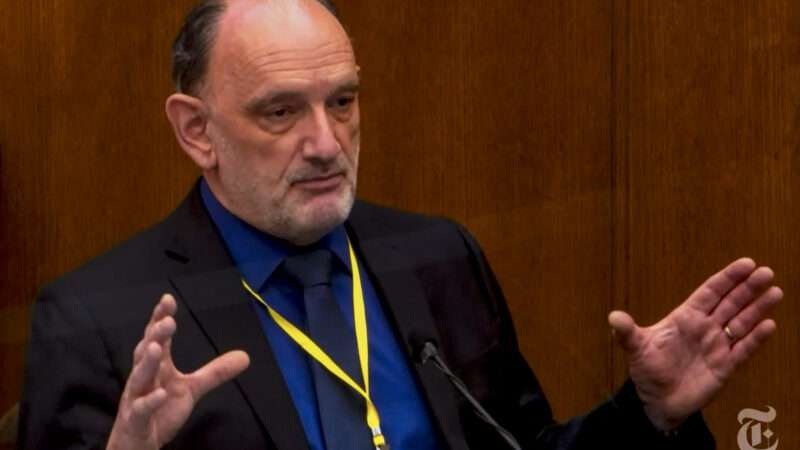To avoid a murder or manslaughter conviction, Derek Chauvin needed to undermine at least one of the two pillars supporting the prosecution’s case: that the former Minneapolis police officer used excessive force against George Floyd, and that Floyd died as a result. Barry Brodd, the defense’s use-of-force expert, took aim at that first claim on Tuesday, but his testimony was unconvincing and in some respects utterly implausible. While forensic pathologist David Fowler did a better job of contesting the second claim in his testimony yesterday, even his account is consistent with a causal link between Chauvin’s actions and Floyd’s death.
The defense rested its case today without putting Chauvin on the stand, and closing arguments are scheduled to begin on Monday. Chauvin’s testimony could have illuminated his reasoning when he kept Floyd pinned facedown to the pavement for nine and a half minutes, although it would have left him open to a potentially brutal cross-examination focusing on the justification for that prolonged prone restraint. But even the defense’s medical testimony left little doubt that the use of force against Floyd, whether or not it was legally justified, caused his death.
The prosecution’s medical witnesses all agreed that Floyd’s death was properly classified as a homicide, even when they differed on the details. Fowler, by contrast, said he would have listed the manner of death as “undetermined,” noting Floyd’s heart disease, his drug use, and even his possible exposure to carbon monoxide from a patrol car’s exhaust while he was pinned to the pavement. Fowler, who worked for the Office of the Chief Medical Examiner in Maryland prior to his retirement, thinks Floyd died from “a sudden cardiac arrhythmia” unmediated by the impeded breathing that the prosecution identifies as the primary cause.
Yet if Floyd was exposed to vehicle exhaust, which Fowler said may have contributed to his cardiac arrest, it was only because of the prolonged prone restraint, which was also responsible for the “stressful situation” that Fowler said was another factor. So Fowler’s account is consistent with the proposition that Floyd would have survived this encounter if Chauvin had handled it differently, meaning that Chauvin’s actions were the but-for cause of Floyd’s death.
“In my opinion,” Fowler said, “Mr. Floyd had a sudden cardiac arrhythmia…due to his atherosclerotic and hypertensive heart disease…during his restraint and subdual by the police.” He added that “his significant contributory conditions,” in addition to heart disease, included the fentanyl and methamphetamine Floyd had ingested and “potentially carbon monoxide poisoning” from “exposure to a vehicle exhaust.”
During cross-examination, prosecutor Jerry Blackwell questioned the latter suggestion, noting that there was no evidence concerning how much carbon monoxide Floyd might have inhaled and that the autopsy report said nothing about this possibility. He also asked Fowler, “How do you know the car was even on?” Fowler said he reached that conclusion by observing what appeared to be water dripping from a tailpipe in video of Floyd’s arrest. But he agreed that he never confirmed the impression that “the vehicle was running” with anyone who would have known.
Chicago pulmonologist Martin Tobin, whom the prosecution called back to the stand today as a rebuttal witness, disagreed with Fowler’s suggestion that vehicle exhaust could help explain Floyd’s death, saying that theory is inconsistent with testing of Floyd’s arterial blood. He also took issue with Fowler’s statement that he could not find research to support Tobin’s conclusion that the pressure Chauvin exerted on Floyd would have compressed the lower part of his throat, further impeding his breathing. Tobin said there is “extensive” research on that subject “in the physiological literature.”
Fowler questioned the prosecution’s claim that “positional asphyxia” killed Floyd, saying “there is no evidence right now” that “the prone position by itself” is “a significant issue.” But in addition to lying on his stomach, Floyd was handcuffed behind his back, and he was pressed against the pavement by the weight of Chauvin’s body and equipment. Chauvin had one knee on Floyd’s neck and the other knee on his back or arm, while Officer J. Alexander Kueng applied pressure to his back and Officer Thomas Lane held his legs. According to the prosecution’s witnesses, all of those factors would have made it harder for Floyd to breathe. And as Blackwell noted, Floyd had just struggled with Kueng and Lane when they tried to force him into their patrol car, and that exertion likely would have increased his need oxygen. During his testimony last week, Tobin gave a detailed explanation of how the prone restraint would have impaired Floyd’s ability to get enough oxygen to stay alive.
Notwithstanding his disagreement about the manner of death, Fowler’s medical conclusion is pretty close to what Hennepin County Chief Medical Examiner Andrew Baker said last week, when he testified that the use of force against Floyd fatally interacted with his “very severe underlying heart disease.” But Baker, like the other medical experts who testified for the prosecution, is confident that “law enforcement subdual, restraint, and neck compression” caused Floyd’s “cardiopulmonary arrest,” which is why he described the incident as a homicide. “I would still classify it as a homicide today,” Baker said.
Baker did not mention asphyxia in his autopsy report. But as Blackwell noted, citing a forensic pathology textbook, “the majority of cases where someone dies of asphyxia are very subtle,” and “no traumatic manifestations are visible at all,” meaning “there isn’t necessarily any physical evidence on autopsy of what it is that caused the low level of oxygen.” And during his testimony, Baker did not rule out the possibility that impaired breathing contributed to Floyd’s death, saying, “I would defer to a pulmonologist.”
Tobin, the prosecution’s pulmonologist, concluded that “Floyd died from a low level of oxygen” caused by impeded breathing, which ultimately “caused his heart to stop.” Tobin said even a perfectly healthy person would have died in these circumstances.
All of these scenarios—including the one described by Fowler—are consistent with the allegation that Chauvin killed Floyd. The relevant question is not whether other factors may have played a role in Floyd’s death but whether he would still be alive but for Chauvin’s actions.
In addition to faulting Chauvin for the prolonged prone restraint, the prosecution noted that neither he nor the other officers performed CPR after Floyd became unresponsive and no longer had a detectable pulse. Fowler acknowledged that “immediate medical attention for a person who has gone into cardiac arrest may well reverse that process.” He said “as a physician, I would agree” that Floyd should have received aid right away.

from Latest – Reason.com https://ift.tt/3gcSNLK
via IFTTT






